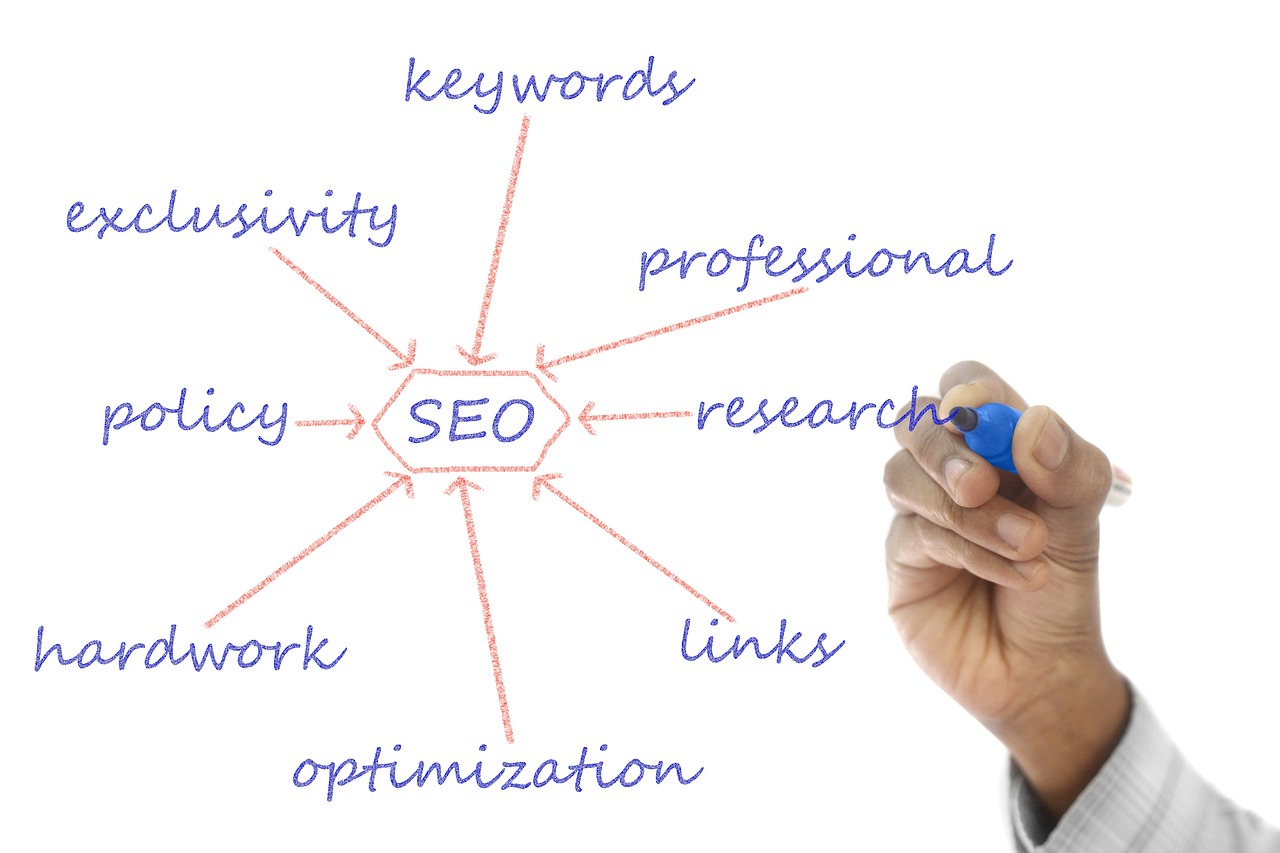Introduction
Internal linking is a crucial aspect of search engine optimization (SEO) that often goes overlooked. While many website owners focus on external linking strategies, internal linking plays a significant role in improving a website’s visibility and ranking on search engine results pages (SERPs). By understanding the basics of internal linking and implementing effective strategies, website owners can enhance user experience, improve page authority, and ultimately boost their SEO efforts.
Understanding the Basics of Internal Linking for SEO
Internal linking refers to the practice of linking one page on a website to another page within the same domain. These links are typically found in the form of hyperlinks within the content or navigation menus. Unlike external linking, which involves linking to pages on other websites, internal linking focuses on connecting pages within a single website.
The primary role of internal linking in SEO is to establish a hierarchy and structure within a website. By creating a network of interconnected pages, search engines can better understand the content and context of each page. This helps search engines determine the relevance and importance of each page, which in turn affects its ranking on SERPs.
The Role of Internal Links in Website Navigation
One of the key benefits of internal linking is its ability to improve website navigation. Internal links provide users with a clear path to navigate through a website, making it easier for them to find relevant information. By strategically placing internal links throughout a website, website owners can guide users to important pages or related content.
A clear and organized internal linking structure is essential for ensuring that users can easily navigate through a website. This involves creating a logical hierarchy of pages and using descriptive anchor text for internal links. By doing so, users can quickly understand the relationship between different pages and find the information they are looking for without getting lost or frustrated.
How Internal Linking Improves User Experience
In addition to improving website navigation, internal linking also plays a crucial role in enhancing user experience. When users can easily find the information they need, they are more likely to stay on a website longer, engage with the content, and potentially convert into customers or subscribers.
For example, if a user is reading an article about “10 Tips for Healthy Eating” and sees an internal link to a related article about “The Benefits of Exercise,” they may be inclined to click on the link to learn more. This not only provides the user with additional valuable information but also keeps them engaged on the website for a longer period of time.
A positive user experience is not only beneficial for users but also for SEO. Search engines take into account various user engagement metrics, such as bounce rate and time spent on page, when determining the quality and relevance of a website. By providing users with a seamless and enjoyable browsing experience through effective internal linking, website owners can improve their SEO efforts.
The Connection Between Internal Linking and Page Authority
Page authority refers to the perceived importance and credibility of a specific page on a website. It is influenced by various factors, including the number and quality of external links pointing to the page, as well as internal linking.
Internal linking can significantly impact a page’s authority by distributing link equity throughout a website. When one page links to another page within the same domain, it passes some of its authority to the linked page. This helps search engines understand which pages are more important and relevant within a website.
By strategically placing internal links from high-authority pages to other pages that need a boost in authority, website owners can improve the overall visibility and ranking of their website on SERPs. However, it is important to note that excessive internal linking or over-optimization can have negative consequences and should be avoided.
Tips for Creating Effective Internal Links
Creating effective internal links involves following best practices and considering various factors. Here are some tips for creating effective internal links:
1. Use descriptive anchor text: The anchor text is the clickable text that appears in a hyperlink. It should accurately describe the content of the linked page and provide users with a clear understanding of what to expect when they click on the link.
2. Link to relevant and related content: Internal links should be used to guide users to relevant and related content within a website. This not only helps users find additional information but also signals to search engines that the linked pages are related and should be considered together.
3. Avoid excessive internal linking: While internal linking is important, it is crucial to avoid excessive linking or over-optimization. Too many internal links can confuse users and dilute the authority passed from one page to another. Focus on quality over quantity when creating internal links.
The Importance of Anchor Text in Internal Linking
Anchor text plays a crucial role in internal linking and SEO. It refers to the clickable text that appears in a hyperlink and provides users with context about the linked page. Anchor text helps search engines understand the relevance and topic of the linked page, which can impact its ranking on SERPs.
When choosing anchor text for internal links, it is important to use descriptive and relevant keywords. This helps both users and search engines understand what the linked page is about. For example, instead of using generic anchor text like “click here,” it is better to use descriptive anchor text like “learn more about SEO best practices.”
It is also important to vary the anchor text used for internal links. Using the same anchor text for multiple internal links can appear unnatural and may be seen as an attempt to manipulate search engine rankings. By using a variety of anchor text that accurately describes the linked pages, website owners can improve their SEO efforts.
How to Audit Your Website’s Internal Links for Optimization
Auditing your website’s internal links is an essential step in optimizing your website for SEO. By identifying and fixing broken links, optimizing anchor text, and improving the overall internal linking structure, you can enhance your website’s visibility and ranking on SERPs. Here are some tips for auditing your website’s internal links:
1. Use tools for auditing internal links: There are various tools available that can help you audit your website’s internal links. These tools can crawl your website and identify any broken or problematic links. Some popular tools include Screaming Frog, Moz, and SEMrush.
2. Identify and fix broken links: Broken links can negatively impact user experience and SEO. They can lead to error pages or dead ends, frustrating users and causing them to leave your website. Use the auditing tools mentioned above to identify broken links and fix them by updating the URLs or removing the links altogether.
3. Optimize anchor text: Review the anchor text used for your internal links and ensure that it accurately describes the linked pages. If you find any instances of generic or irrelevant anchor text, update it to provide users with a clear understanding of what to expect when they click on the link.
4. Improve internal linking structure: Take a close look at your website’s internal linking structure and ensure that it is clear, organized, and logical. Make sure that important pages are easily accessible through internal links and that there is a hierarchy in place that guides users through your website.
The Benefits of Internal Linking for E-commerce Websites
Internal linking is particularly beneficial for e-commerce websites. By strategically linking product pages, category pages, and related content, e-commerce websites can improve their visibility on SERPs and enhance user experience. Here are some examples of effective internal linking strategies for e-commerce websites:
1. Linking related products: When a user is viewing a specific product page, it can be helpful to include internal links to related products. This not only provides users with additional options but also encourages them to explore more products on your website.
2. Linking category pages: Category pages are an important part of e-commerce websites as they help users navigate through different product categories. By including internal links to category pages within product descriptions or on the sidebar, you can guide users to relevant products and improve their overall experience.
3. Linking to customer reviews and testimonials: Customer reviews and testimonials can play a significant role in influencing purchasing decisions. By including internal links to customer reviews and testimonials on product pages, you can provide users with social proof and increase their trust in your products.
The Impact of Internal Linking on Mobile-Friendly Websites
With the increasing use of mobile devices for browsing the internet, it is crucial to optimize internal links for mobile-friendly websites. Mobile users have different browsing habits and preferences compared to desktop users, and internal linking strategies should reflect this. Here are some best practices for optimizing internal links for mobile devices:
1. Use responsive design: Responsive design ensures that your website adapts to different screen sizes and devices. This includes optimizing internal links to be easily clickable and accessible on mobile devices.
2. Use larger buttons or text for internal links: Mobile users typically have smaller screens and may have difficulty clicking on small links or buttons. Make sure that your internal links are large enough to be easily clickable on mobile devices.
3. Optimize anchor text for mobile: Keep in mind that mobile users may have limited screen space, so it is important to use concise and descriptive anchor text for internal links. This helps users understand the context of the linked page without taking up too much space on their screens.
The Future of Internal Linking and SEO: What to Expect
As search engines continue to evolve, it is important to stay ahead of the curve when it comes to internal linking and SEO. Here are some predictions for the future of internal linking:
1. Increased emphasis on user experience: Search engines are placing more importance on user experience metrics, such as bounce rate and time spent on page. This means that internal linking strategies should focus on providing users with a seamless and enjoyable browsing experience.
2. Integration of AI and machine learning: As AI and machine learning technologies continue to advance, search engines may become better at understanding the context and relevance of internal links. This could lead to more sophisticated algorithms that reward websites with well-structured and relevant internal linking.
3. Voice search optimization: With the rise of voice assistants like Siri and Alexa, optimizing internal links for voice search will become increasingly important. Internal links should be structured in a way that aligns with how users ask questions or make requests using voice commands.
Conclusion
Internal linking is a critical aspect of SEO that should not be overlooked. By understanding the basics of internal linking, optimizing anchor text, and creating a clear and organized internal linking structure, website owners can improve their website’s visibility, enhance user experience, and boost their SEO efforts. Take the time to audit your website’s internal links, optimize them for mobile devices, and stay ahead of the curve by keeping up with the latest trends in internal linking and SEO. By doing so, you can maximize the potential of your website and achieve higher rankings on SERPs.








































0 Comments